
Maybe not today. Or tomorrow. Or very soon. But eventually.
During the recent Level 1 Teacher Training in L.A., an excellent question was posed by one of the outstanding Yoga Tune Up® Teacher trainees: I have fabulously tight psoas. Wouldn’t warming up by marching make my [bad] psoas worse, given the additional hip flexion? Actually, the trainee posed the question much better and funnier. But I don’t know shorthand and didn’t take a recorder. Also, if you don’t like this blog, you can blame her.
Seriously though, this same question bothered me when I was first told that squatting is one of the best things a person can do for his/her health. Wouldn’t this extreme hip flexion shorten my dysfunctional psoas more? Wouldn’t it tighten my already tight calves and hamstrings? (We’ll put aside the fact that I was doing the squat in a less than optimal fashion – that might be another blog.) What I was missing was that an active contraction of a muscle has a profoundly different effect on the tissue than when the muscle is passively shortened.
To clarify, a “tight muscle” may not mean the same thing to all people. A muscle can become passively shortened due to habits like sitting (for the psoas) and/or walking around in high heels (please don’t do this) (for the soleus). This is not the same thing as a muscle that has been through so much “exercising” it’s become hypertonic. Neither condition is good for skeletal muscles, but they are very different conditions from one another.
As with the brilliant YTU Teacher Trainee referenced above, the psoas of people who live in cultures with rampant usage of chairs, sofas and cars, are very likely to be have been passively shortened (i.e., shorter than optimal length). For people who also incorporate a fair amount of running and cycling, the psoas is also going to be hypertonic – unless its owner spends an equal amount of time in real hip extension (as opposed to fake hip extension – but that’s also another blog).
So what causes a muscle to passively shorten?
While this can happen to other muscles, the one that has the international spotlight lately, and this blog, is the psoas. If you have chronic lower back pain, if you have trouble standing or walking upright, or can’t sleep on your back without a bolster under your knees, you can thank your poor psoas. You have two of these skeletal muscles, one on each side of your pelvis and their geometry is determined by the angle of your thighs relative to your lumbar spine – and how many hours each day you spend sitting or curled up in a fetal position because your back hurts. Go ahead; count the number of hours your hips are flexed at a ninety degree (or smaller) angle each day. If it’s a lot, and for too many people it’s probably close to eight hours of at least their waking hours, the psoas will adaptively shorten.
The human body tries to be efficient. It will stop supporting tissues and structures which its owner does not use. Why waste the energy and resources of keeping a muscle at its optimal length if a person almost never keeps it or uses it at that length? Having excess length in a muscle is not efficient – consider how sloppy a yacht’s sail looks (and how ineffective it becomes) when the ropes holding it up are too loose. The body does not want sloppy muscles. So it will shorten muscles by removing sarcomeres at the end of muscle fibers. Slack in a muscle triggers the muscle fibers to shorten while a pull (stretch) on a muscle stimulates the addition of sarcomeres to the ends of its myofibrils. [1]
Learn more about our teacher training.
[1] P. E. Williams & G. Goldspink, Changes In Sarcomere Length And Physiological Properties In Immobilized Muscle, Journal of Anatomy, 127 (Pt 3), 459–468 (1978).



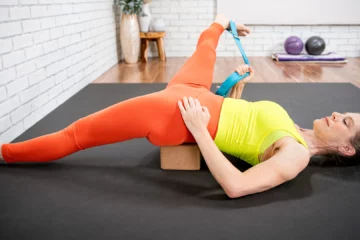
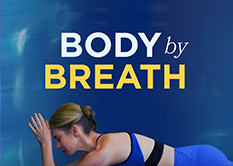
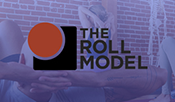
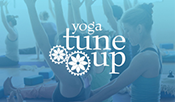


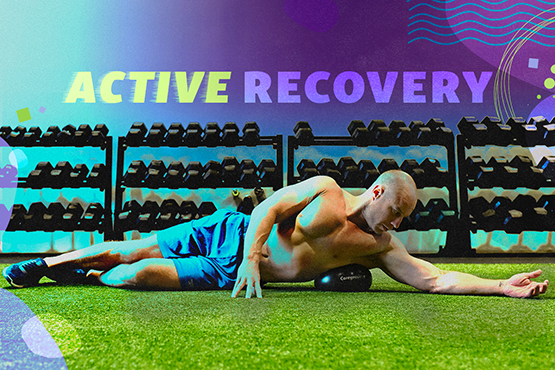
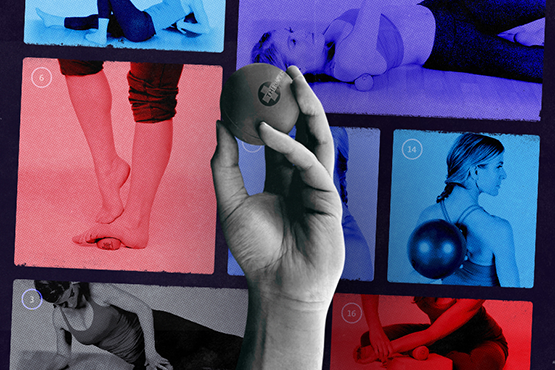
Yes! This is so me. Looking forward to reading on and learning more!
I can feel my tight psoas muscles complaining as we speak!
I appreciate the humor and simplicity in the way you explain this concept. It completely makes sense, but as you state in your bio, “the body’s needs for optimal health are incredibly simple; how the body compensates for damaging habits is extraordinarily complex.” Thank you for explaining what it means to passively shorten muscles vs contract them and how important it is for mobility to contract them. Incredibly, the body always adapts.
Thank you for a great, easy to understand explanation – I am learning more about why contracting muscles is so important and lengthening muscles is the easiest way to injure them
Thank you very much for sharing this post. I actually wondered the same thing since Marching involves a fair amount of hip flexion. I have very tight hips from my office job, sitting most of the day, and from recreational sports (bicycling). Now it makes sense regarding the difference between passive flexion and active flexion. You highlighted succinctly how active movement can bring warmth to the psoas and TFL and how Marching can help with both strengthening and lengthening. I’m fascinated how there is an explanation on the cellular level. I need as many sarcomeres in my hip flexors as possible.
really to undestand why my psoas are so “thight”
A great explanation of how sitting for years and years at a desk can so adversely affect your musculature .
Hi Dana,
Could be tight/short psoas or it could be something else or a combination of a number of factors. Like the chain effect you describe, typically one joint is rarely alone in being misaligned and effects can cascade throughout the body. If you have pain and trouble walking, please consider arranging for a consult with a trained specialist or therapist. There are also a number of great articles here which discuss back pain.
Best wishes,
Alexa Kim
Hi Alexa, I have trouble standing upright at times and I often wonder if it is tight psoas. Although I know I am more flexible than possibly most people in America, I still have lower back pain, and I am not sure if it illustrates to direct psoas tightness. I believe the pain in one area is a chain effect form another area. I believe my pain in my lumbar is from an injury and from slumping my shoulders forward while seated at a computer desk (in a rather cheap third world county style chair) for many year… this also might have tightened my psoas but that is not the case today, I believe it’s a chain effect from internal rotation in the shoulders, rounding the spine in flexion, which later caused strain in the posture, completely misaligning me and causing over all back pain.
This is something I never even considered and hadn’t thought of actually happening. Yet another way that the body adapts to what we present it with!
I love the way you explain this, its as if nothing is “wrong” its just fact that the muscle will go away. I appreciate your insight and am looking forward to reading more about this. (and your future mentioned blog posts)
Thanks Alexa! I’m half way through my training week and one of my biggest learnings is that we need to strength train and keep our muscles strong and not overly mobile. I’m going to rock my power planks!
Love the analogy of the sloppy yacht sail and rope as underused muscle (and maybe the rope is the tendon?). How much less control the sailor would have over the yacht if the sail spontaneously shrunk when slack!
Intuitive question and it does apply to most of the Western world. I like the explanation that the body’s form of evolution is to just stop using the muscles that we don’t address.
Great article and great benefit since I am 1.2 way done with my teacher training. I have had psoas issues for sometime and its only taken over a year to get it stronger, stable and feeling better, however I am sure there were plenty of other muscles that contributed to my right hip pain.
I wondered though, how did it come to be? Pilates? Chronic, hip flexion, always in table top,Running, and then sitting? I just do not sit that much. Yoga Tune up ….things that make you go…hmmmm…
I absolutely love your sail example – will be passing this on to my clients. I didn’t know the exact science behind it – that muscles shorten by removing sarcomeres at the end of muscle fibers and a pull/lengthening side of a stretch stimulates the addition of sarcomeres to the ends of its myofibrils. Fabulous – thank you!
As a personal trainer I’ve struggled with and debated this issue forever! I know that just because the muscle is tight and short doesn’t mean it can’t also be weak and therefore would need to be worked, however with sitting/driving and the amount of cardio (99% of which is in sagittal plane) and only further shortens the hip flexor,s do I dare work them more? Yes, I do. The way I see it, the psoas muscles never get to fully contract, so you want to be able to take them through their full ROM for blood supply and a balance in the muscle, it’s like doing a bicep curl only half way..
I am currently in Level 1 Teacher Training and just discovered this difference today but regarding the hip flexors and Marching – Minivini. Sarah and Trina explained this crucial difference – dynamic movement! Shortness and stiffness of a muscle, as I understand it, is like atrophy. Whereas dynamic movement equals aliveness and health!
[…] energy, sankalpah, sleep, yoga breath, yoga breathing Do you wake up with stiff joints or tight muscles? Do you wake up tired after a night of sleep? Do you drink coffee or tea in the morning to get […]
[…] Tune Up® Blog « What You Don’t Contract Can Kill You, Part 1 Did You Finish Breathing Yet? […]
Hi Alexa,
Learning more about the psoas has been prominent for me as I have had to deal with lumbar scoliosis since I was a teenager. Fortuenately I discovered yoga in the early 90’s and have been practicing now for 20 years and can’t imagine what my state would have been without constant awareness of posture and alighnment all these years, thanks for sharing.
Hi Alexa! This is really interesting and a wakeup call for me to be more proactive about getting outside and walking instead of staying heads down at my computer 8 hours a day.
Learining to intergrate through breaking down poses brings a deep quality for expansion and integration for me. The discovery awaits as I listen and learn more about the body structure. This is a great article as I have been challenged with a lower back/ hip issue forever and now I am beginning to understand that if I am to organic the muscle will shorten… can’t wait to read more.
also looking forward to part 2…i’m connecting with this information. thanks!
I’m current in the Level 1 YTU training. Jill briefly talked about this today with regard to posture and the muscles of the back. I (like most people who spend a chunk of their day on a computer) have a tight, sore upper back and neck. I’ve been trying to be more conscious of my posture and to extend my spine periodically to counteract all the hunching over. I haven’t thought about actively engaging the muscles though. As with Annelle, I’m not sure I fully understand how this could help but I’m looking forward to part 2.
I´m currently in a level 1 TT and I am not quite sure I understand the why flexion would be a help given the facts in the last section. Hopefully part to will make it a little clearer… Lengthening the psoas seems so much more reasonable.
Wonderful article – can’t wait for Part 2. And, I think I know exactly which teacher trainee said this! :))